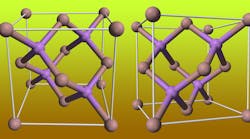The race to develop millimeter-wave devices for short-range wireless communications applications typically starts with an advanced semiconductor process based on compounds such as gallium arsenide (GaAs) or gallium nitride (GaN). But a growing number of investigators are finding that a lower-cost silicon semiconductor process, complementary metal oxide semiconductor (CMOS) technology, is quite capable of generating millimeter-wave signals. While many of the advances in Si CMOS are motivated by the needs of the cellular communications industry, many other industries can benefit from progress in this low-cost silicon transistor technology, including for gas sensors and medical analysis.
To explore the possibilities of Si CMOS technology at higher frequencies, researchers from the Jet Propulsion Laboratory of the California Institute of Technology (Pasadena) and the University of California at Los Angeles developed a CMOS transmitter for a sub-Doppler spectroscopy system. The fundamental frequencies produced by the CMOS transmitter are generated by delta-sigma fractional synthesis. A 48-MHz reference frequency is used for the synthesizer, with a 10-MHz atomic clock as the frequency standard. The synthesized output signals from the CMOS source range from 46 to 53 MHz.
These signals are then fed to a custom CMOS multiplier integrated circuit (IC), where the 1,920th harmonic is used to lock a 90-to-105-GHz voltage-controlled oscillator (VCO) in a type 2 phase-locked-loop (PLL) frequency synthesizer architecture. The VCO output is then boosted by means of a four-stage transformer-coupled power amplifier (PA) before being wire-bonded to WR10 rectangular waveguide for transfer to millimeter-wave components, such as the W-band pyramidal horn antenna used with the gas spectroscopy system.
For gas spectroscopy applications (and many communications applications), modulation is required, and this CMOS-based millimeter-wave source is capable of producing amplitude modulation (AM) by means of a digital pulse generator designed into the transmitter IC. In addition, by introducing a time-varying sinusoidal signal to the 48-MHz reference signal, it is possible to generate frequency modulation (FM).
Admittedly, this millimeter-wave source delivers extremely low output power levels with such large multiplication factors, since the reference source itself is only provided a few milliwatts of power. But the CMOS millimeter-wave source achieves low phase noise in a region of −125 dBc/Hz offset 20 kHz from the carrier, measured at the 1,920th harmonic. The experimental approach more than hints that silicon CMOS may still have some ways to go in terms of output signal frequency, if strategies can be developed to increase the amplitude of the output signals without seriously degrading the phase-noise performance.
See “Sub-Doppler Spectroscopy With a CMOS Transmitter,” IEEE Transactions on Terahertz Science and Technology, Vol. 8, No. 1, January 2018, p. 121.

